Engineering the 2020 Escape
Key factors leading to the all-new generation of the crossover.
#electronics #hybrid #interior
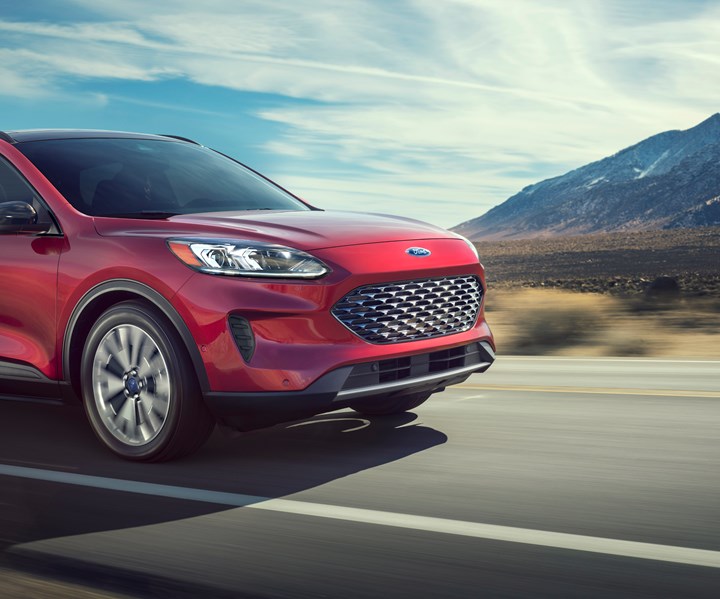
(Images: Ford)
James Hughes has a big job. He’s the chief engineer, globally, for the Ford Escape and Kuga, which means that he’s involved with the design, engineering and production of the compact utilities (he acknowledges that due to variations in regulations on a global basis there are differences between the Escape and Kuga, such as location of the steering wheel, tuning, powertrains, but he points out, “The underpinnings of the Escape and Kuga are very similar”) in five assembly plants. He’s been on the project that has given rise to the 2020 Escape for about 4.5-years.
“We had a groundbreaking vehicle in 2001 with the original launch of the Escape. Since then, four generations later, we’ve sold some 4.5-million units in North America, and of those vehicles, almost 99 percent are still on the road today,” Hughes says.
He adds, “We recognize that in our portfolio of vehicles, this small SUV carries a lot of weight and has a lot of responsibility in our new SUV lineup.”
And he and his colleagues also recognize that the Escape faces some rather stalwart competitors, such as the Toyota RAV4 and the Honda CR-V, so they worked to develop an Escape that would more than hold its position in the segment.
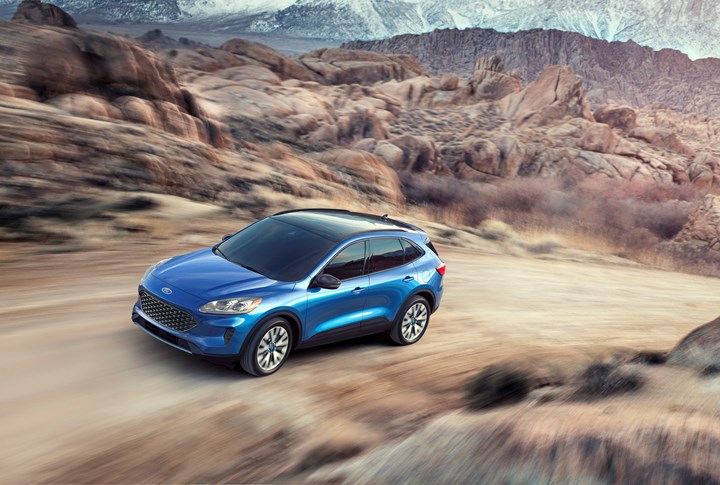
According to George Bucher, chief designer, “The vehicle really casts a dramatic silhouette, with a lower roof and fast back. The longer nose gives the front a confident and aggressive quality that I think Escape drivers will love.”
Perhaps not surprisingly, the 2020 Escape is bigger than its predecessor. It is 180.5 inches long (+2.4 inches), has a 106.7-inch wheelbase (+0.8 inches), is 85.6 inches wide with mirrors (+3.8 inches), and 68.6 inches high (+2.3 inches). The passenger volume in the 2020 Escape is 104 cubic feet, compared with 2019’s 98.7 cubic feet. and the cargo volume (for the non-hybrid version) behind the second row is 37.5 cubic feet, up from 34 cubic feet in the previous generation (and now readily capable of accommodating four bags of golf clubs, which is a key metric nowadays for vehicular capacity).
In addition to which, Stephan Presser, vehicle engineering manager, points out that not only is the 2020 model longer and wider, “We also decided for a rear isolated subframe. We increased the wheel and tire sizes. We added the second row sliding seat [which provides 6 inches of travel fore and aft].”
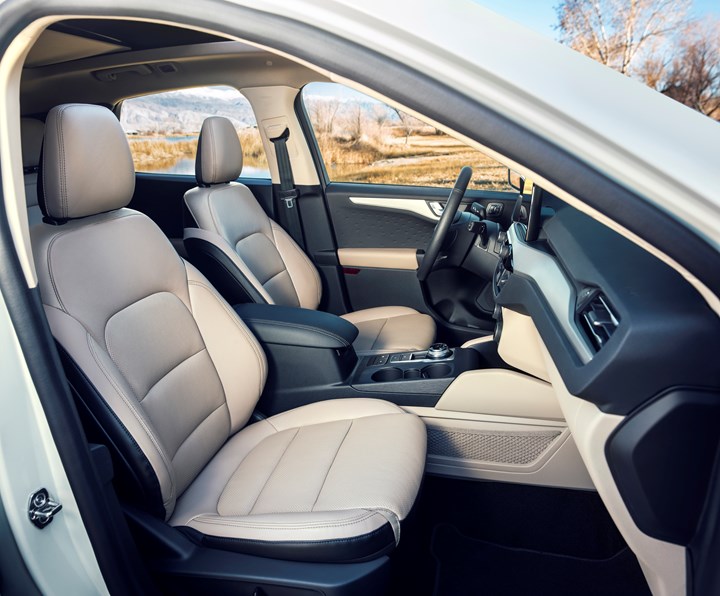
The engineering team paid particular attention to NVH. Stephan Presser, vehicle engineering manager, says, for example, that they perforated the seat material. The reason: a smooth surface reflects sound. By putting in the holes, the sound can be absorbed.
So what is surprising is that the bigger, more featured 2020 Escape is approximately 200 pounds lighter than the previous generation model.
“Weight is interesting,” Presser says. “It is easy to gain weight. It is very difficult to reduce weight.
“It’s like Thanksgiving—another piece of pie is easy to take.”
Presser says that they wanted to reduce mass not only to help benefit fuel economy, but in order to make the vehicle more nimble.
So what did they do?
Largely, it has to do with materials. They’re using aluminum in places like the hood and in the suspension. There is an array of steels being deployed. Presser cites the use of martensitic steel for the A-pillars, which allows them to make the pillars narrower for better visibility. There is boron steel for the B-pillars, which is strong but light. Another material they’re using is “Smart Steel,” from Material Sciences Corp., which, Presser explains, is like a composite that has a polymer sandwiched between mild steel. The polymer helps enhance the properties of the steel while reducing mass.
Presser says they’ve increased the torsional rigidity of the 2020 Escape by about 10% compared with the previous model.
“And there was a lot of attention to detail,” Presser says. “We’d look at every component and ask if we could make it lighter with a chamfer, radii or lightening hole, for example. And when you do that a 1,000 times. . . .”
The curb weight for the 2020 Escape, with a conventional ICE powertrain, ranges from 3,299 pounds to 3,551 pounds, depending on the size of the engine and whether the vehicle is front- or all-wheel drive.
And the powertrain story for the 2020 Escape is an interesting one.
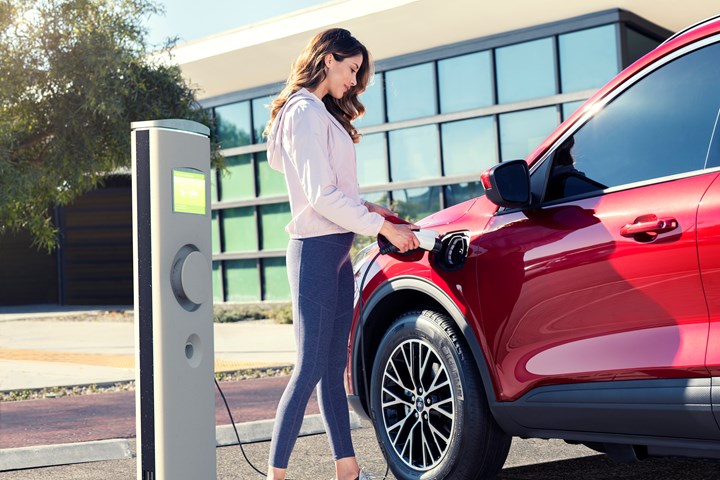
The Escape will be offered as a standard and as a plug-in hybrid. The plug-in will provide some 30 miles of all-electric range.
For example, Mary Bourke, powertrain program management leader, notes that there are two EcoBoost engines available: a 180-hp 1.5-liter and a 250-hp 2.0-liter (at the time of her telling this, those numbers are estimates). Both engines feature an aluminum block and head.
The 1.5-liter is an in-line three-cylinder engine. And to make sure that they’re getting the best fuel efficiency they can from the engine, there is cylinder deactivation. Which means that the vehicle can operate on two cylinders, with the activation or deactivation of the cylinder occurring in 14 milliseconds.

The 2020 Escape provides up to 37.5 cubic feet of cargo capacity.
Bourke says that a big challenge of going from three cylinders to two is vibration or torque fluctuation mitigation. “We do it seamlessly,” she says, adding, “I can’t tell you how we do it because it is through software. And it is proprietary.”
The new 2.0 liter engine is said to be up to 10 percent faster in a 0 to 60 run compared with the 2.0-liter in the 2019 Escape. And it allows the 2020 Escape to tow as much as 3,500 pounds. (The 1.5-liter? 2,000 pounds.)
Both engines are mated to an eight-speed automatic.
The model year 2005 Escape was available with a hybrid powertrain, which made it the first SUV with a hybrid. But with time Ford decided to remove that powertrain option for the Escape in 2012 and made the utility-choice for a hybrid the C-MAX. But now the C-MAX is out of the U.S. lineup and the hybrid is back for the Escape.
This is the fourth-generation hybrid system that Ford has developed. In the Escape the internal combustion engine is a 2.5-liter Atkinson cycle engine that is mated to an electronic continuously variable transmission, also known as a power-split transmission. The system electronics are integrated into the transmission; this allows more precise cooling. The lithium ion battery pack is liquid cooled. The vehicle can run at up to 85 mph on electricity alone. And the hybrid can tow, too, up to 1,500 pounds.
Early in 2020, Ford will be offering a plug-in hybrid version, as well. This will have an estimated electric-only range of 30 miles. The battery can be recharged on a 110-volt system (Level 1) in from 10 to 11 hours; on a Level 2, or 240-volt, system, the charge can be accomplished in 3.5 hours.
And, of course, the 2020 Escape comes with an array of standard—Ford Co-Pilot360 (blind-spot information system, lane-keeping system, automatic emergency braking with pedestrian detection, rear-view camera)—and optional tech (e.g., Active Park 2.0, which allows pushbutton parallel or perpendicular parking without the need for the driver to work the steering wheel, gear selector or pedals).
Ford’s approach to the U.S. market will be one where crossovers and SUVs will play more important roles as traditional sedans are deemphasized. Chief engineer James Hughes notes, “A lot of our customers are coming from sedans, so we wanted something that would be attractive to them. So this vehicle was designed to be nimble, athletic and sleek.”
They worked to optimize and to avoid compromise.
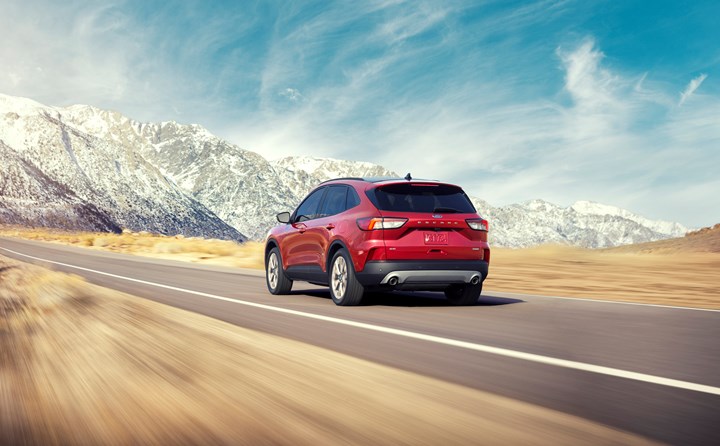
RELATED CONTENT
-
On Traffic Jams, Vehicle Size, Building EVs and more
From building electric vehicles—and training to do so—to considering traffic and its implication on drivers and vehicle size—there are plenty of considerations for people and their utilization of technology in the industry.
-
Aluminum Sheet for EV Battery Enclosure
As the number of electric vehicles (EVs) is about to increase almost exponentially, aluminum supplier Novelis is preparing to provide customers with protective solutions
-
Tesla Owners in Germany Ordered to Return Subsidy
Germany has ordered about 800 Tesla Model S electric cars owners to pay back a €4,000 ($4,700) government subsidy they received.


.jpg;width=70;height=70;mode=crop)